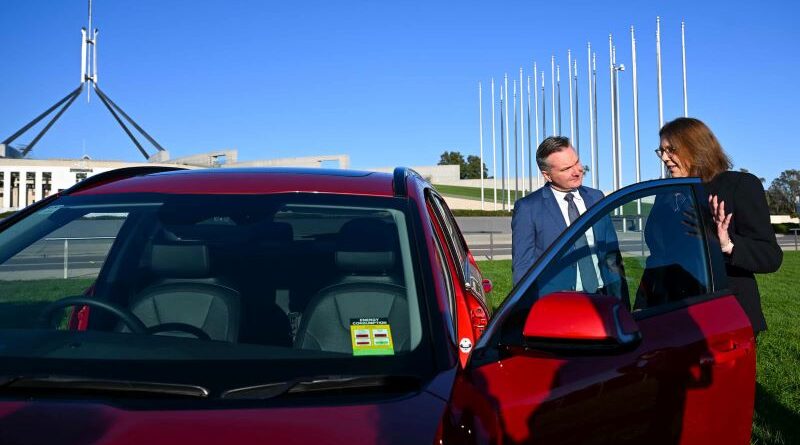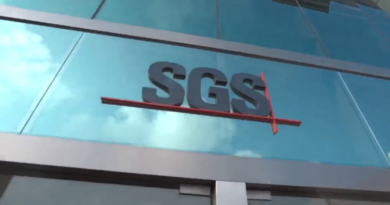Labor’s fuel efficiency standards mean all new cars could be EVs by 2035, industry group says
Suppliers of electric vehicles are the big winners from the Albanese government’s fuel efficiency standards, with one industry group saying half of all new cars will be electric by 2029 and 100% by 2035 on the proposed trajectory.
The energy minister, Chris Bowen, and infrastructure minister, Catherine King, released the details of the plan for consultation on Sunday, saying motorists would potentially save $1,000 a year by 2028 as manufacturers brought in more efficient models.
New passenger cars in Australia use 40% more fuel than those in the European Union and 20% more than equivalent vehicles in the US. Australia will aim to benchmark measures with the US, where driving patterns are more similar.
The Electric Vehicle Council, an industry group, was among those welcoming the standards, including the government’s preferred option that is predicted to slice the nation’s carbon emissions by avoiding almost 100 million metric tons of carbon dioxide emissions by 2035 and 369 million metric tons by 2050.
“We’re pretty pleased with where they’ve landed,” said Behyad Jafari, the council’s chief executive. “We’ve doubled EV sales for three years in a row [to 8.4% of the market in 2023], and we’d like to see it double again this year.”
One industry insider who asked not to be named said the government had “done a really great job,” adding it was “as ambitious as we’d hoped.”.
Australia is the only OECD nation without energy efficiency standards for new vehicles other than Russia. The government issued a consultation paper in April 2023 on the proposals and is giving the public another month to provide feedback before proposing legislation to introduce the scheme by next January.
A likely outcome would be the emergence of a market for carbon credits. EV-only makers such as China’s BYD and Tesla from the US would be able to sell credits to carmakers such as Japan’s Toyota or Isuzu that will struggle to match the low-emissions offerings, the insider said.
Matt Hobbs, the chief executive of the Motor Trades Association of Australia, said the emergence of a carbon price “does help” the transition, but much more is needed to ensure the market moves to where the government wants it to.
“The actual trajectory is very, very aggressive,” Hobbs said of the government’s preferred option. “I didn’t think they’d go this fast.”
“Fifty percent of the market will have to be EVs by 2029 to hit these targets,” with an implied 100% share if extended to 2035, he said.
However, based on the details released, the government is offering no additional incentives to make the switch away from internal combustion engine vehicles. By contrast, the US offers US$7,500 (A$11,525) in federal subsidies, with some states, such as California, topping up the support by similar amounts.
Hobbs called on the government to release the modelling of how it estimated the $1,000 a year in savings. Assumptions for the cost of vehicles, different depreciation rates and even the price of electricity compared with petrol or diesel could make sizeable differences in the potential savings.
Guardian Australia has asked the government to release the modelling used.
Hobbs said it remained uncertain how many companies would make low-emission varieties available for Australian consumers, given the right-hand drive market. Isuzu, for instance, was among the carmakers that might drop out of the market given its limited mix of relatively high-emitting utes and sports-utility vehicles.
Australia also had its own design standards, including seatbelt tethers for back-row middle seats or the lack of an off-switch for some airbags, which meant suppliers would have to adjust their product even if they were already selling more efficient models into Europe or elsewhere, Hobbs said.
The opposition’s transport spokesperson, Bridget McKenzie, also called for more evidence to back up savings claims she dubbed “an absolute lie.”.
“You can’t have it all,” McKenzie said on Monday. “What the government is asking us to believe is that you can reduce emissions by 60% by 2030, that you won’t have any reduction in choice of vehicle, and that the price of cars won’t go up.”
Bowen rubbished the opposition’s criticism, calling it a “rerun” of Scott Morrion’s political scare campaign that incorrectly declared the introduction of electric vehicles would “end the weekend.”.
“The more you drive, the more you pay at the bowser; the more efficient your vehicle is, the more your savings,” Bowen said, adding rural and regional motorists would be the “big winners” of the proposed changes.
Helen Rowe, the transport program impact manager at Climateworks Centre, said “the number one barrier to reducing Australia’s runaway transport emissions has been a lack of fuel efficiency standards.”.
The government’s design was “a welcome first stop on the road to tackling emissions and finally giving the nation access to a greater choice of electric vehicles that are cleaner and cheaper to run,” Rowe said.
Rosie Thomas, the director of campaigns and communications at Choice, said the absence of standards had made Australia “an unattractive market for more efficient vehicle manufacturers, including electric vehicles.”.
“This means consumers in Australia currently have fewer vehicle choices and are paying more for fuel compared to international markets,” Thomas said.
Source : theguardian.com




